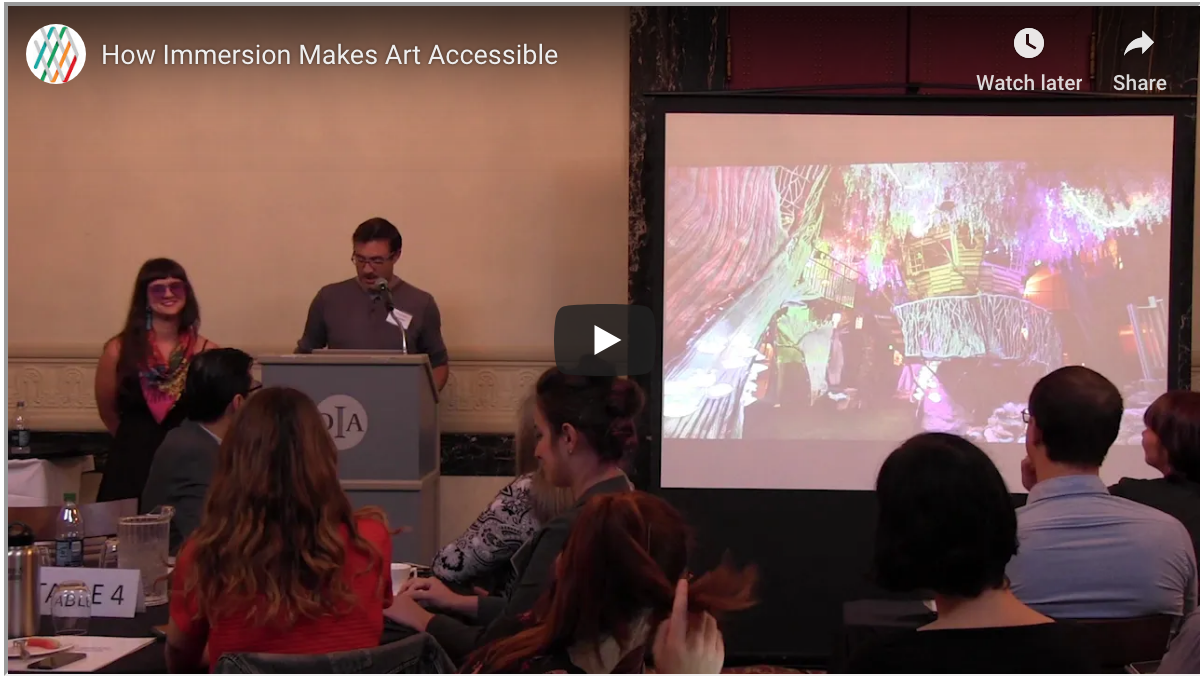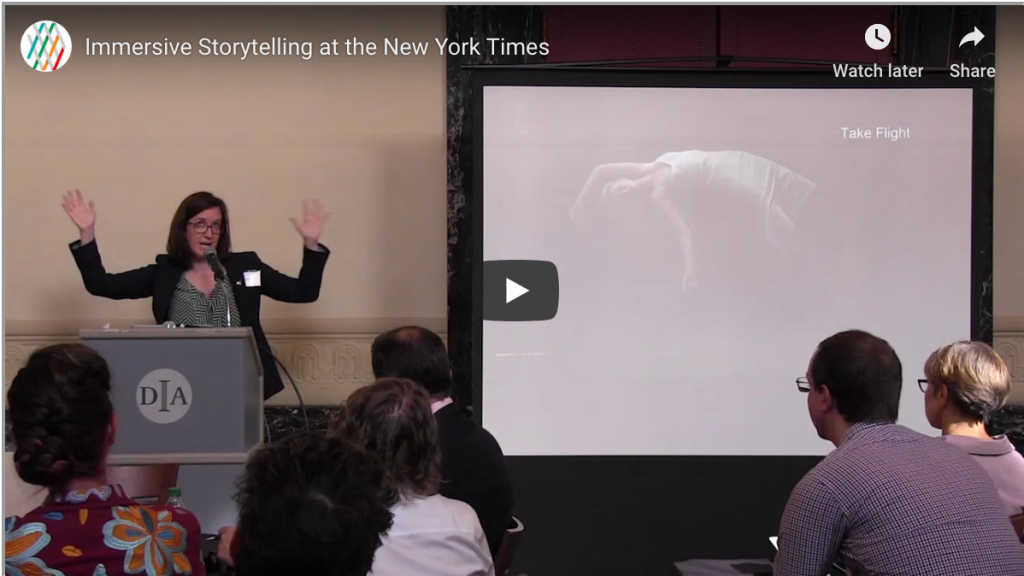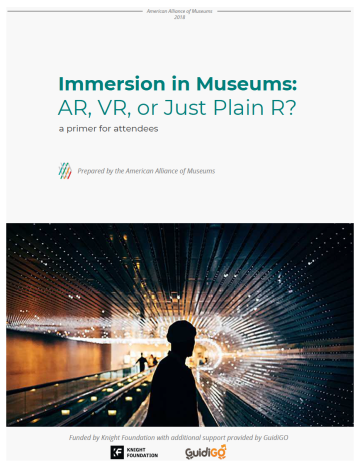Immersion in Museums: AR, VR, or Just Plain R?
On September 5th and 6th, 2018, the American Alliance of Museums organized a two-day convening around the topic of immersion in museums. The event was hosted by the Detroit Institute of Arts, Detroit, Michigan, and had more than 75 museum leaders, technologists, scholars, and artists in attendance.
Topic Description
Some have said that it’s possible to travel the world in an afternoon without ever leaving the galleries of your favorite museum. Certainly, many of us have experienced losing ourselves amidst fantastic objects and stories that transport us to other places and times. With the maturation of digital technologies like augmented and virtual reality (AR, VR), museums are on the cusp of creating increasingly compelling virtual experiences that extend the reach and possibilities of what a museum might become. These virtual experiences can refresh and personalize the museum space, as well as extend museums’ reach beyond their physical walls to engage new audiences. A new class of born digital AR and VR art challenges museum staff to develop new practices for collection, preservation and rights management.
At the same time, our visitors are increasingly concerned about the dangers of privileging digitally mediated experiences over real time spent with friends and family. We observe that the social experience of museum-going is frequently cited as among the top motivations for visiting at all. We know that museum visitors value the authenticity of the real thing?and despite the influences of a visually-laden social media culture, the interest and dedication of audiences to hyper-local, artisanal, and delicately nuanced physical experiences hints at a desire for the real over the virtual.
Witness the contemporaneous popularity of physically constructed immersive experiences like Meow Wolf in Santa Fe, the City Museum in St. Louis, and exhibitions like Wonder at the Renwick Gallery. What are the potential futures of digital and physical immersion in museums and how can we begin to think strategically about the nuances that define the boundary between the physical and the virtual? How can museums create compelling experiences for visitors that effectively engage them with the subject, while creating compelling and memorable experiences that can be shared with friends and family?
These are just a few of the questions and provocations that were covered at “Immersion in Museums: AR, VR, or Just Plain R?”, a dynamic convening organized by the American Alliance of Museums and funded by Knight Foundation, with additional support provided by GuidiGO.
To learn more about this event and topic please see:
How Immersion Makes Art Accessible
Presenters: Meow Wolf Co-founders, Vince Kadlubek and Golda Blaise
Immersive art is more than just a valuable trend in the museum world. Immersive art is actually an inclusive expression that brings accessibility to a general population that too often feels alienated by the art world.
Watch the keynote presentation from Thursday, September 5, 2018 here: How Immersion Makes Art Accessible.
Immersive Storytelling at The New York Times
Presenter: Maureen Towey, creative producer
Towey explored the evolution of immersive storytelling at The New York Times with a focus on The Daily 360, an initiative that she co-led which published a 360 experience every day for over a year. Towey focused on discoveries made by her Daily 360 team while creating VR in museums and other cultural institutions.
Watch the keynote presentation from Friday, September 6, 2018 here: Immersive Storytelling at The New York Times.
Unpacking Our Understanding of Immersion
Read Ed Rodley’s post about the event here: “Unpacking Our Understanding of Immersion”.
Rodley, Associate Director of the Peabody Essex Museum, provides insights into the questions asked and lessons learned at the event.
Immersion in Museums primer
The primer for Immersion in Museums: AR, VR, or Just Plain R? is available for download here.
Sponsors
This event was organized by the American Alliance of Museums, funded by Knight Foundation, and hosted by the Detroit Institute of Arts.
Additional support for this event was provided by GuidiGO.




